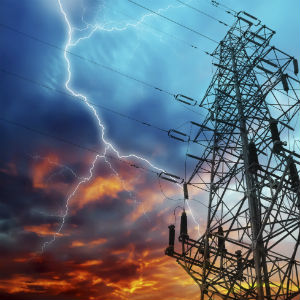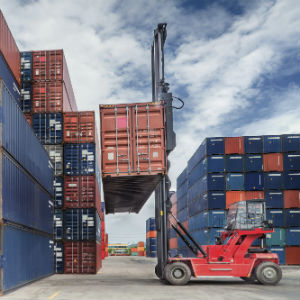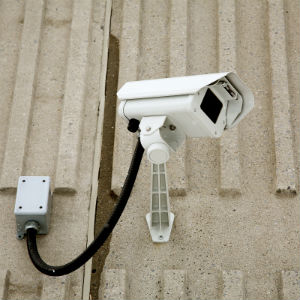There are several important points to consider while providing security surveillance solutions for seaports. Here we talk to industry experts to find out the best seaport security solutions, challenges to installing them and effective workarounds.
Being a major entry point in any country, seaports warrant special attention when it comes to security. Besides the obvious concerns such as unauthorized access, cargo theft and smuggling, post 9/11 terrorist fears and piracy concerns have all made it vital that seaports are given a critical infrastructure status in nations across the globe.
There are several important points to consider while providing security surveillance solutions for seaports. Here we talk to industry experts to find out the best seaport security solutions, challenges to installing them and effective workarounds.
What are the challenges when installing security systems at seaports?
Given the large number of equipment that goes into a seaport security solution and the complexity of integrating them, ensuring that non-intrusive security is indeed a core issue. Whatever be the systems installed, it should not interfere with the daily operations at the port. But from a systems integrator’s (SI) or a solution provider’s perspective, this is only one among the many such concerns.
 An often neglected part of seaport security is
An often neglected part of seaport security is
underwater threats.
Nick Swift, Business Manager for Maritime Security at Sonardyne International insists that conditions at seaports are some of the most difficult to implement an ideal security system.
“The reliable detection of underwater intruders - and discrimination from marine fauna - is a notoriously difficult problem,” said Swift. “Any intruder detection system must work in the most challenging acoustic environment with ports being one of the most complex, thanks to reflections of dockside walls and constant noise from vessel movement.”
To Aditya Morampudi, President of the India-based SI Morcorp Solutions, the primary concerns begin from selecting the right equipment that can withstand the conditions and perform at the optimum level. Given the environment, a general norm would be ruggedized industrial products.
“The major challenges are mostly related to the environment,” Morampudi said. “Salty air, due to the proximity to sea, dust, and the kind of cargo being handled in the port/terminal will all affect the physical parameters of the system.”
Morampudi added that ensuring proper network connectivity is also a challenge due to the constant activity at a seaport. Accidents such as cable being unearthed or a cargo vehicle snapping an over-ground cable could happen at any time. Natural events such as hurricanes and lightning strikes will also have a magnified impact at seaports.
In fact, from an SI’s point of view, the very nature of seaport and its operation itself would be the major challenge. John Romanowich, CEO of SightLogix, agreed to this.
“Ports cover large geographic areas that include varied perimeters that are not capable of being secured the same way as you would approach most perimeter security applications,” Romanowich said. “For example, fences aren't feasible for the waterside segment of a perimeter. Physical barriers also do not provide the necessary situational awareness over the large areas typical for a port setting. Lighting is often poor or unavailable, and ports are often adjacent to public areas or neighborhoods where pedestrian intruders represent both security and safety threats.”
How difficult is it to upgrade old security systems to new solutions?
 Natural calamities like hurricanes and lightning
Natural calamities like hurricanes and lightning
strikes have a magnified effect at seaports.
Then there is the issue of old equipment that is already in place. Eric Olson, Vice President for Marketing at PureTech Systems feels that providing integrated security solutions with minimal impact to the system infrastructure to minimize cost is not easy.
“Upgrading entire server suites or replacing existing cameras with megapixel models can be very affordable, but once infrastructure (wiring, poles, etc.) requires modification, costs begin to escalate rapidly,” Olson said. “Fortunately, as seaports move to IP based systems, this provides them the flexibility to more easily upgrade to other IP based sensors and migrate to faster servers with minimal impact to infrastructure.”
Derek Tan, Director of Integrated Solutions Asia at
Tyco International, gave a wider picture on the issue as he explained the potential risks that seaports are often vulnerable to.
“Most of the security systems deployed [at seaport] are to ensure not only the port compound but also the perimeter and surroundings are safe,” Tan said. “In addition, they need to ensure that the ships and cargos in hold are safe from the multi-faceted threats from land, air and also the sea.”
Freight and passenger ports: are they really different?
Given the nature of operations, security requirements at freight and cruise seaports are quite different. Modern ports are often multi-functional combining both activities, and SIs have to know the specific requirements on each side.
 Freight seaports are espcially vulnerable from a
Freight seaports are espcially vulnerable from a
financial perspective.
For the cruise port, passengers’ safety is always the priority. According to Louis Noriega, Physical Security and Port Operations Technology Consultant at Automated Port Solutions, security systems at cruise terminals are more relevant than that at cargo terminals, indicating that people who come to cruise are on holiday, which is not an absolute necessity. Speaking from his experience at the Port of Miami, he added that of all the surveillance cameras installed at the site, 80 percent were in and around the cruise terminal.
“You’re moving probably around 10,000 people in and out on the same day, getting all the passengers off the ships, through the garages, out of the garages, out of the parking garages, having them pay for the parking and then getting ready for the passengers who are leaving on the same day,” Noriega said.
When it comes to freight seaports though, it’s a different ball game altogether. According to James Somerville-Smith, EMEA Channel Marketing Leader at
Honeywell Security, securing the perimeter is the primary concern in freight seaports.
“Many ports and their warehouses are large and poorly lit, and thus theft and damage to property are the two biggest threats,” Somerville-Smith said. “Moreover, with many port employees relying on heavy machinery such as forklifts, there is an increased risk to health and safety as well as inventory security.”
Juan Echavarria, Business Development Manager - South Americas at
Mobotix, added that security solutions at a freight port will also have to specifically consider the cargo specialty of the port.
“Is it a ‘dry or wet’ port, is it loading/unloading at the open water (sea or river), or are they going from water to land,” Echavarria said. “In fact there are many possibilities here, and requirements can change day-to-day due to law regulations, operations or any other factor.”
In fact, M Kumaraguru, MD of the Malaysia-based SI Maha Asia, insists that freight seaports require more security precautions than its luxury counterpart. Daniel Hearn, Pelco Regional Sales Director- Northeast is of the same opinion.
“Cargo shipping is a billion-dollar business, much more in value compared to the cruise shipping industry,” Kumaraguru said. “The movement of goods is crucial to global businesses and economy.”
“Freight seaports are much more difficult to secure,” Hearn said. “These facilities typically require protection of an entire perimeter including personnel access points, railcar access points and vehicle access points.”
What’s the current technology? What’s the future?
The equipment that goes into most modern seaports would naturally include the state-of-the art security solutions split into centralized and decentralized solutions with analytics at the edges. Somerville-Smith named certain specific equipment that often comes into play at the wharf and channel.
“Radar video surveillance solutions are often installed to transmit radar and video to a central security center, which allows port officials to monitor ship traffic in the channel,” Somerville-Smith said. “If a suspicious vessel or individual is identified, then high magnification PTZ
 Industry players expect quite a few new
Industry players expect quite a few new
technological entries in this vertical
in the future.
cameras can be used to track them and gather more details.”
While such equipment is relevant, an increased awareness of potential sophisticated threats and an eye on ROI have heightened the need to improve the options.
“3D imaging solution allows greater accuracy, depth, and detail in validating the threats,” said Tyco’s Tan. “This saves precious time spent traditionally on physically opening and inspecting each container. This technology can also be applied to enhance precision and coverage during night surveillance.”
Other similar solutions include unmanned aerial vehicles (UAVs) that leverage on Bathymetric LiDAR technology for scanning the underwater threats. Pelco’s Hearn added that he expects to see higher resolution multi-imager video cameras in the future.
Eric Olson, Vice President Marketing at Puretech Systems also gave his perspective on what to expect, indicating that a move to higher resolution cameras would be a natural shift.
“As higher end sensors continue to become more affordable, seaports will add more diverse sensors such as radar, GPS and long range acoustic devices (LRAD),” he said.
“These sensors will then be enabled to collaborate with the seaport’s existing video management capability for hands-free reaction to events.”
Kumaraguru said he expects to see future installations using Power over Ethernet (PoE) LED lights that are integrated with cameras. Such a combination could see intelligent lighting systems that could operate independently depending on the conditions and be extremely conducive to operations at sites like seaports.
Robust seaport security solutions critical to keep threats at bay
After the 9/11 attacks, air travel took a major hit. But being an inevitable part of modern life, the airline business recovered quickly enough. But if a similar scenario is to come up in the cruise shipping sector, the end-result would be disastrous, according to Noriega.
Such a concern is relevant to cargo shipping industry too. As Kumaraguru and others pointed out, increased growth in global trade necessitates more freight seaports. But this comes under the shadow of terrorism and piracy concerns, demanding stringent security at ports. In short, this vertical is all set to continue growth as the global economy moves forward.